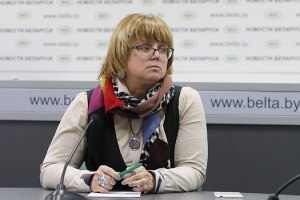Ru
|
Eng
IAEA-compliant system to monitor radiation around Belarusian nuclear power plant
29.09.2016

The automated radiation situation monitoring system in the Belarusian nuclear power plant area will work taking into account recommendations of the International Atomic Energy Agency (IAEA). The information was released by Maria Germenchuk, Head of the National Center for Hydrometeorology, Radioactive Pollution Control, and Environmental Monitoring of the Belarusian Natural Resources and Environmental Protection Ministry, during an online conference hosted by the BelTA website.
The official remarked that the monitoring system is fully compliant with the IAEA requirements and recommendations. “Our leading specialists, who work in this field, are IAEA experts, this is why we put all the recommendations of the agency into practice right away,” remarked Maria Germenchuk.
Belarus also took part in the IAEA technical cooperation project for modernizing and expanding the network for atmospheric radiation monitoring. Belarus was able to acquire specialized equipment, for instance, specialized devices for collecting and analyzing atmospheric air samples. Belarusian specialists were trained as well. “Requirements for specialists change all the time. This is why it is very important that the IAEA takes care of supporting national radiation monitoring services via such projects. It is particularly important with regard to the construction of the nuclear power plant because all the data we are going to get must be absolutely correct.”
The Belarusian radiation monitoring system has been praised by foreign colleagues. “Japanese, Mongolian, and South Korean colleagues demonstrate interest and respect for our work. As far as cooperation with Lithuania is concerned, we have a large effective program for jointly monitoring Lake Drisvyaty, atmospheric air and soil. Over decades of joint work we evaluate how the radiation situation around the Ignalina nuclear power plant changes. It is an example that demonstrates effectiveness of our radiation monitoring system. We have never received complaints from the Lithuanian side. Contrariwise, they confirm the high level of our scientific and technical cooperation.”
BELNPP: NEWS FROM CONSTRUCTION SITE
23.07.2024
11.07.2024
28.06.2024
06.06.2024
04.06.2024
04.06.2024
03.06.2024
24.05.2024
23.05.2024
03.05.2024













